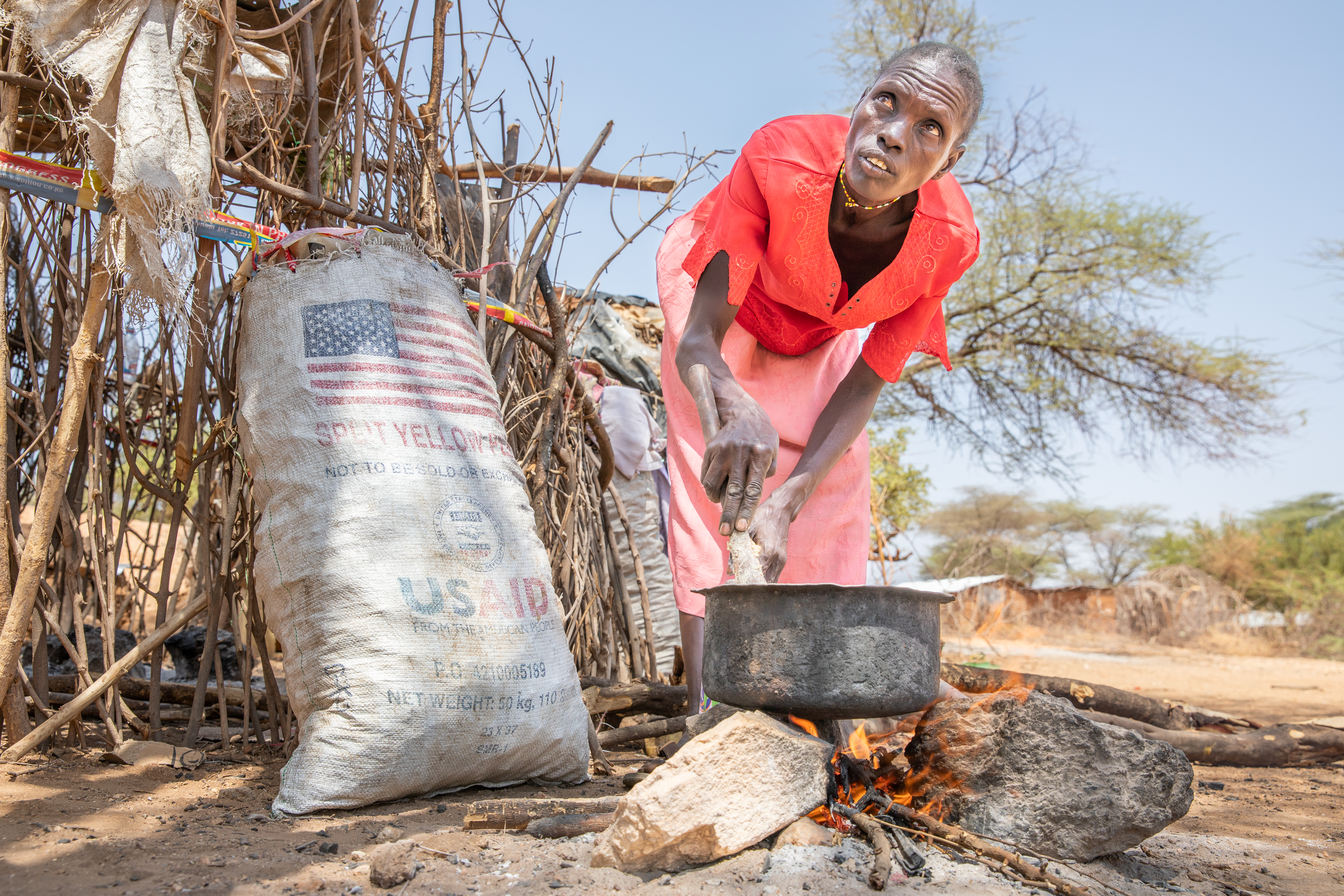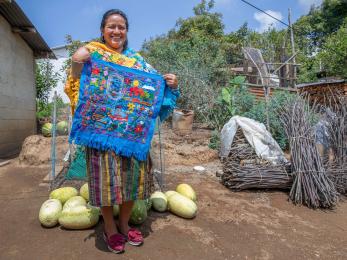Violence and child marriage: The many risks refugee girls face

Girls in many places in the world face challenges from the day they are born. They struggle to get access to education and financial opportunities and are often vulnerable to abuse.
Refugee girls — or girls who’ve been displaced in their own country — face particular challenges. Domestic violence, rape and early marriage are all very real risks for refugee girls.
Addressing the unique needs of girls is a part of Mercy Corps' response to humanitarian crises. When adolescent girls gain confidence, have access to school, and receive emotional support, they can break the cycle of poverty, early marriage and social isolation.
But reaching refugee girls can be difficult. In an effort to keep girls safe, they are often prevented from accessing the very resources they need to take control of their lives.
We spoke with Amy Spindler, Mercy Corps’ adolescent girl and youth advisor, about the unique challenges refugee girls are facing — and how our work helps them survive, cope and achieve their goals.
Q: What are the biggest challenges young girls are facing around the world? What challenges do they face that an American girl does not?
Amy Spindler: One of the biggest challenges facing girls is the opportunity to go to school. Globally, one in five girls is not in school. And in the world’s poorest countries, less than half of girls finish primary school.
Schooling is about so much more than what happens inside the classroom. A girl who finishes secondary school is less likely to experience violence, and more likely to access health care and earn an income. For every year of school completed, a girl’s income can increase by 10 percent, if she has the opportunity.
Girls are denied schooling for a lot of reasons that highlight the challenges they face: They have a heavy work burden at home, cooking, collecting water and caring for younger siblings.
Sometimes girls are kept from school because it’s unsafe for them to walk to school. Menstruation keeps girls from school, as does the lack of girl-friendly and safe latrines.

Missing out on school is linked to another challenge that American girls don’t have to think about: Child marriage. Girls who are given the chance to stay in school and finish secondary school are up to six times less likely to marry as children compared to those with little or no education.
Every year, about 14 million girls under the age of 18 are married; one in seven girls is married before turning 15.
Q: And what about for Syrian refugee girls? What are their lives like?
The challenges that girls face globally become intensified during conflict and crises. Before the conflict in Syria, 98 percent of girls entered secondary school; today, it is 6 percent inside of Syria.
And while Turkish, Lebanese, and Jordanian schools are open to Syrian refugees, many schools cannot accommodate their numbers. Most Syrian girls are unable to attend school for the reasons we discussed, as well as language barriers.
Out of school, these girls become invisible. They are hidden at home and tasked with meeting their family’s basic needs. They are also at a much higher risk for physical and sexual assault when securing food, water, shelter or clothing.

Girls say they must constantly negotiate for their safety. In a recent report by the Women’s Refugee Commission, one in three girls or women said they felt too afraid or overwhelmed to leave their homes.
Q: Are there effects and consequences of being a refugee that affect girls specifically? Either practically or mentally?
Absolutely. Girls’ exposure to violence increases during times of crises. Among Syrian refugees, girls report high rates of sexual exploitation and harassment when they leave their homes. And yet, many are not safe inside their homes either as domestic violence is on the rise.
We also see an increase in “survival sex,” in which girls or young women trade sex to meet their basic needs or gain access to services. Access to services and information is a real challenge for girls because they are isolated at home and have limited mobility.

Q: How does that affect their ability to grow up and dream for the future?
In our interviews with Syrian adolescents, they expressed a lack of hope and anxiety over their futures. They face so many barriers to access education, safe work, services, public spaces and friends. It’s very hard to dream for the future when you’re struggling so much in the present.
Q: Is early marriage a risk for these girls?
Yes. It’s a huge risk. One in five marriages among Syrian refugee women is actually a girl under the age of 18. A United Nations report has documented much higher rates of child marriage as compared to averages in Syria before the conflict.
Child marriage is driven by the misconception that marriage can secure a better future for girls and ease the financial burden on families, as well as earn their daughter more respect as a married woman.
Once married, these girls are often isolated from their friends and social networks.
They’re also at higher risk for domestic abuse and poorer maternal health outcomes. Girls who give birth before the age of 15 are five times more likely to die in childbirth compared to young women in their twenties. Their babies are also more likely to die before their first birthday.
At such a young age, a girl’s childhood is stolen, as well as the opportunity for her to become an equal partner in a marriage. This inequality means that most girls are unable to advocate for their needs, including their sexual and reproductive health.

Q: Is it true that in refugee communities, girls can sometimes be hard to find? How are we finding them?
I would say that girls are almost always difficult to reach in refugee communities for the reasons that we discussed. They are hidden at home as a survival strategy.
At Mercy Corps, we are piloting an approach that is more proactive in reaching girls. It takes intentional effort to find girls, to understand who they are and their needs. I think it is important to note that adolescent girls are not the same and have different needs depending on factors like their age, educational status, marital status and whether or not they have children.
In places like Turkey and Iraq, we are using mobile technology to map the demographic profile of girls to make them visible to humanitarian workers. In Turkey, our team of 10 reached 1,317 households in five days to learn more about adolescent girls in the community and their needs.
This technology also maps available services in the area, so we understand what exists and what the barriers are for girls to access these services.
Finally, we reach out to girls who share similar challenges or risks. We ask these girls—and their parents—to share their insights about how we can support their priority needs and address their concerns. We use this information to link the most isolated girls to existing services and schooling, and to tailor programs designed specifically for girls.
Q: And what can we do for young refugee girls to help them?
We create safe spaces for girls to meet and connect with other girls. In these spaces, they also connect with a mentor who becomes a trusted confidant.
Girls participate in weekly lessons that cover topics such as building self-esteem, setting personal goals, problem-solving and recognizing and preventing gender-based violence. They also connect through sports and games.
We have also worked with adolescents on digital storytelling, using photography and music to express themselves and share their experiences with others. Being heard is so validating.
We also provide psychosocial support and courses like English language.

Q: Why is it so important that we help refugee girls during this time of their lives?
Adolescents are at a critical crossroads in which they are setting the course for their own lives and their country’s future. Limiting a girl’s future by denying her the right to education, a safe livelihood and basic health care, also limits the future of her children, her community and her country.
Q: Why do you think Americans, especially American women and girls, should be concerned about what is happening to refugee girls?
This is at once a very simple and a very complicated question. At its simplest: We should care because these girls and women could be our daughters, our sisters, our mothers. Empathy is known to increase our desire to connect and help others; it is also linked to feeling more fulfilled and happy.
I think it is our responsibility to not turn away, but to really see these girls and understand their plight. We need to understand what is happening globally and where we fit into the puzzle.
Today, there are nearly 60 million displaced people around the world. This means that our own communities are going to start to look and feel different as the migration continues. So investing in adolescents, first through empathy and then through action, is needed if we want a more secure and stable world.


